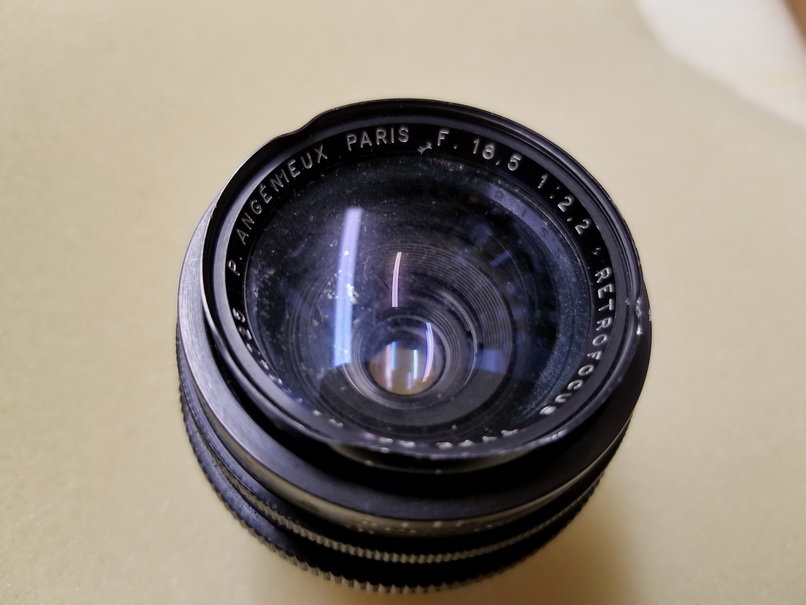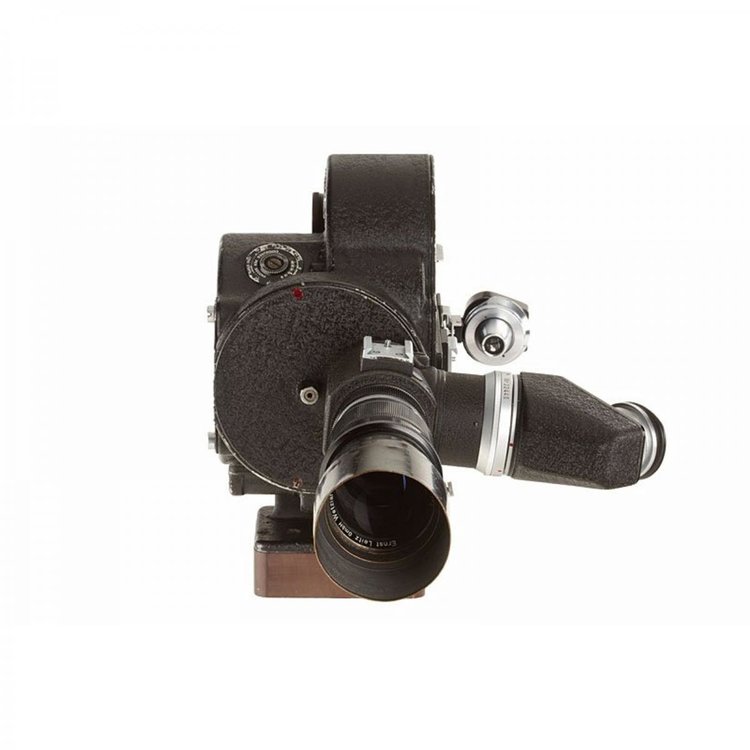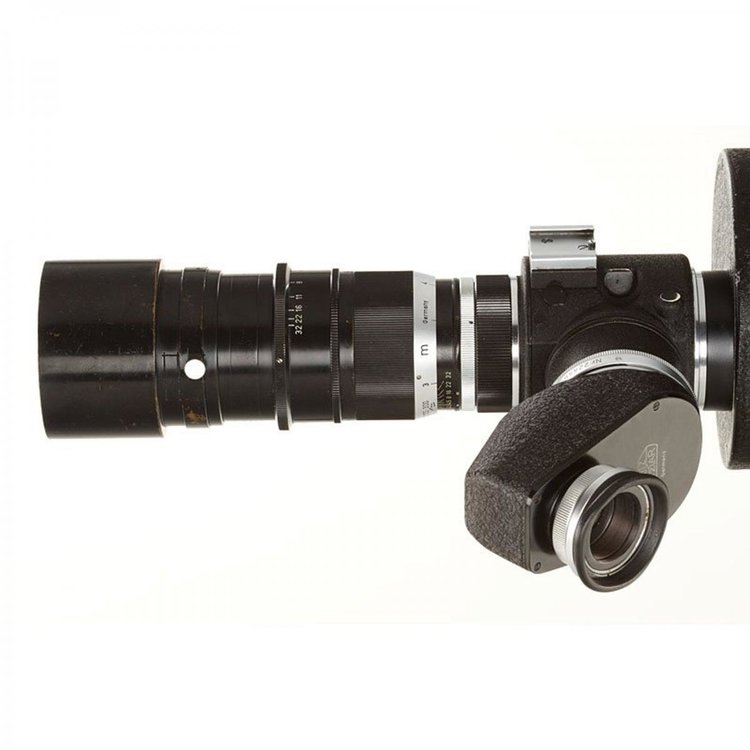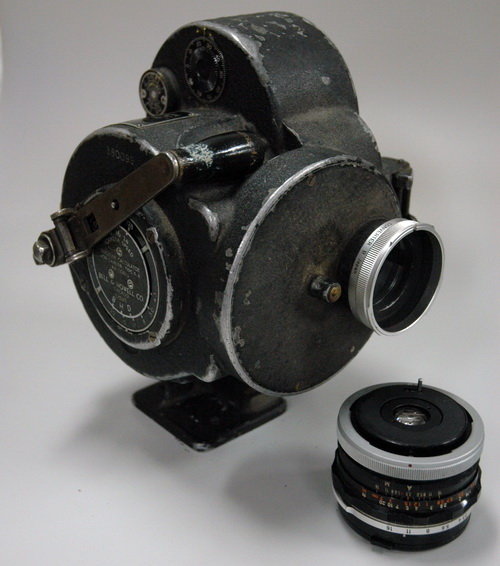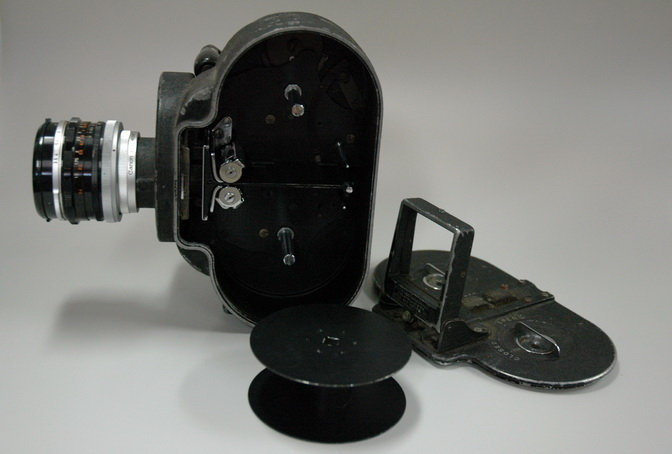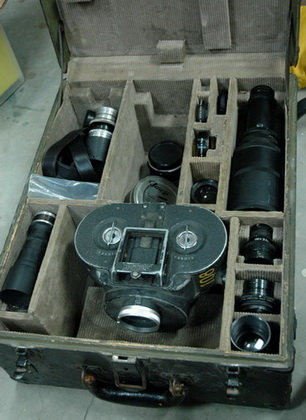-
Posts
237 -
Joined
-
Last visited
Everything posted by Webster Colcord
-
Thanks for these insights, Simon. I'd mention also that Bolex actually made a little rackover base for moving the critical focuser into the taking position. Regarding the disadvantages of a pellicle reflex, and the spinning mirrored shutter issues (I have an Arri 2B and light tends to leak around the shutter) - what do you think of the design of the Beaulieu's shutter? I don't fully understand it but they call it an "oscillating shutter" if I recall? Is there an advantage to that design?
- 28 replies
-
- Bolex
- Super 16mm
-
(and 1 more)
Tagged with:
-

Finding Gigs/ Gigs Finding you
Webster Colcord replied to Alejandro Ramos's topic in Jobs, Resumes, and Reels
When looking for gigs in my realm of expertise (vfx/animation) I would say that Craigslist is THE WORST. And so depressing. Every once-in-awhile there's a great ad posted by someone as an "answer" to all of those wannabe producers who are looking for free labor (the classic line is that it's "great exposure"), those are pretty entertaining. The best gigs always come from people you know, your network. Word of mouth. Facebook helps with that. There's also a few new "virtual studio" companies on the internet that are interesting - they sort of "crowd source" for commercial work. I haven't worked for any of them yet and my understanding is that it's very hit-or-miss in terms of landing the gigs and they don't pay well. But it seems to be a growing part of the market. Check out: www.tongal.com -

Any advice for shooting a short outside?
Webster Colcord replied to Esther Kim's topic in Lighting for Film & Video
Ernest Dickerson on lighting black faces: https://mic.com/articles/184244/keeping-insecure-lit-hbo-cinematographer-ava-berkofsky-on-properly-lighting-black-faces#.iHvCrUAIn -

Films Exclusively Shot on Wide Angle Lenses?
Webster Colcord replied to Max Field's topic in Lenses & Lens Accessories
"I Am Cuba": https://vimeo.com/199082417 -
What is the camera in the poster for the Spielberg-produced documentary, "Five Came Back"?
-
Jean-Louis Seguin in Montreal will modify a Bolex to Super 16, might be more economical to go that route: https://www.facebook.com/bolextech
-
One thing I learned recently (courtesy VFX cameraman Jim Aupperle) is that in classic front projection (with a beam splitter) your projector must have a lens with f-stop control. You need that to be able to adjust the depth of field on the projector to minimize the "halo" that can happen around your subject. I'm sure that's covered in the Samuelson book. I don't have my copy with me to check.
-
I saw it at the Castro in San Francisco last weekend, can't add much to what others have said here but I would agree that the colors really surprised me. I have seen it on film (maybe 70mm?) a few times over the years but I didn't recall the colors being that vibrant and warm. While the future tech predictions hold up amazingly well, that color palette reminded me of the era the film came out of - almost like an LSD-inspired blacklight painting. The patches in the Scotchlite front-projection screen in the "Dawn of Man" sequence were not noticeable to me but I wasn't looking for them. I am amazed how well that sequence holds up in terms of the fg/bg projection match. You can see the slight color tone difference in a few of the shots. There was one giant taped-over tear in the film, on a single frame, toward the end of the that sequence that reminds you that they didn't do any digital clean-up.
-

Export as what for best quality.....
Webster Colcord replied to Stephen Perera's topic in Post Production
What is your final project resolution? I have been searching for the best codec for 2k or 4K export. h264 and Avid DNXHD are great but in my experience (exporting from After Effects) they're limited to HD. For 2K and 4K I have had luck exporting a MP4-encoded quicktime, tweaking for a smaller file size by adjusting the data rate limit. I'm on a PC so I can't export ProRez and my online searches say that h265 is the thing, but a legit standardized version of that codec does not seem to be out yet. -
Cinelab Boston does it as well, 35 and 16mm: http://www.cinelab.com/suite-Digital_to_Film.html
-
I found a couple of fairly recent delivery spec documents for two different Netflix projects. This isn't really proprietary info and one of these two projects is out there so I'm pretty sure I'm not violating my NDA's. This is for a recent Netflix series: show resolution 3840 x 2160 And this is for a Netflix feature: plates turned over from Production will have resolution of 4144 x 2184 (effective 4k framed area of Open Gate) shots delivered back to Production should have 5% protection resolution of 4042 x 2184
-
I work in VFX and we do get requests to deliver in 4K. I'm on the previs/animation side so I don't know all of the final delivery specs, but I do know that the most recent Netflix production I was on was shooting in 8K (!) and finishing in 4K. Why 8K, I don't know - doesn't make sense but they had the money and maybe wanted to "future proof" their camera original.
-

Urgently Looking for Kodak EXR 50D 16mm film
Webster Colcord replied to James A Coote's topic in Film Stocks & Processing
Mono No Aware sells it in New York: http://mononoawarefilm.com/exr-50d -
I love your commentary on this thread Simon Wyss, saving it for future reference. Incidentally, I found a dirt cheap little Wollensak 25mm fixed focus lens that actual covers the full frame of my BlackMagic 2.5k sensor. Pretty neat. Most of my c-mount lenses vignette a little. Would love to see some examples of shooting of on high resolution microfilm emulsion. Adrian Cousins, who does home processing in London, shot this on high contrast 16mm title stock (Kodak 7363 rated at 10asa): https://vimeo.com/237972362 Daniel, have you considered a CP-16? They are quiet, made to fit on a shoulder, and have good registration. They're also very cheap because they're not "sexy" cameras.
- 16 replies
-
It seems like the Eyemos have gone up, but other (larger) cameras - Arri's, Mitchells - have come down in price. The Clairmont Camera auction had about 10 Eyemos that were going for a song, and similarly I think they fetched comparably high prices next to the Arri's & Fries Mitchells that were being sold.
-
I don't know if he's still in business, but there's a Cineflex package on this site for $1300. Sort of a knock-off of the Arri 2B. http://www.cinemagear.com/cameras.html#35mm_cameras
-
I pride myself on not being afraid to ask dumb questions of smart people. In this spirit, I sent an email to Les Bosher to inquire about an adapter that would fit the Eyemo lens into an Arri standard mount (an Arri 2B with the spring-loaded levers on the lens sockets) - or if it's possible. He confirmed that it is NOT possible. So I would assume it's also not possible for an adapter to fit it to a Micro 4/3rds mount.
-
Nice title - the opener is great! Reminds me a bit of the opening title of "Quatermass and the Pit". I was there on Sunday only, almost brought my Bolex, but didn't. I'm so glad you shot film there! In addition to the great sculptural works/make-ups, I found myself looking at a lot of the camera packages people were carrying around. Folks with their tricked-out dslr's with all of their add-ons.
-
I think someone mentioned this lens recently in the forum? I dug it up over the weekend - years ago I got this Angenieux 18.5 lens in an Eyemo mount. Beat-up and dirty, but still a beautiful lens. I have barely ever used it since I only shot with my Eyemo a few times. I don't think there are adapters to fit the Eyemo mount to Micro 4/3rds?
-
Apparently someone has done the Eyemo/Visoflex adaptation. Found this on an auction site, here's the description: "almost similar 35mm camera to the previous lot, converted for Leica M39 screw mount with unique by Leitz built 18x24mm Visoflex I (no.22446) with semi-reflecting mirror for simultaneously scoping and filming and Telyt 4.5/20cm no.1503010 (hood), VIOOH universal finder no.87574 (with strap, used as directors viewfinder), metal case."
-
Here's the old Eyemo that I sold to a WW2 collector. Somehow I came across this little Canon mount which required very little modification of the camera to fit it on. A very old cameraman in Portland, Oregon by the name of Bill Crispin did the work.
-
I realize that I misunderstood which one was shorter and which was longer, thanks for your follow-up Dom. Long ago I sold the Eyemo that I had modified with the Canon mount, but I'll track down some photos of it and post here.
-
Thanks for the info Dom. BTW, I really like the postings on your Cinetinker site where you dissect the Eyemo, Arri IIB, and Bolex. If the flange depth is shorter for Leica, could I make a custom adapter for the Visoflex > Eyemo (probably by taking apart an old Eyemo lens)? I would be extending the distance a little, correct?
-
Maybe I missed this elsewhere but what would it take to get a Leica Visoflex to work properly, with the correct focal depth (I hope my terminology is correct here) mounted to the front of an Eyemo? https://www.ebay.com/itm/EXCELLENT-LEICA-LEITZ-M-90MM-2-8-ELMARIT-OTZFO-WETZLAR-VISOFLEX-II-REFLEX-M10-M6-/282935843416 - Is it even possible? I had an Eyemo modified years ago to take Canon lenses (I believe that a short section of the Eyemo barrel had to be removed to get the depth correct).
-

Som Berthiot Pan Cinor Lens
Webster Colcord replied to John Carty's topic in Lenses & Lens Accessories
Thanks Dom! That's the one!





